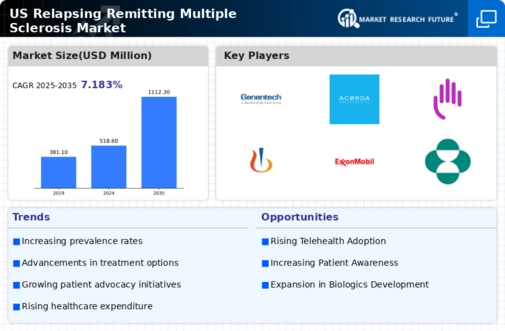The competitive insights of the US Relapsing Remitting Multiple Sclerosis Market reveal a dynamic landscape characterized by innovation, aggressive marketing strategies, and an ongoing race for superior therapeutic solutions. The market is witnessing a surge in demand for effective treatments as awareness around Relapsing Remitting Multiple Sclerosis grows. This growing demand is fueled by advancements in technology and research, leading to the development of new and improved pharmaceutical products.
Companies are focusing on areas such as patient-centric approaches, real-world evidence, and personalized medicine to capture a significant share of this lucrative market. The competitive environment is not only defined by the diversity of products available but also by the strategic positioning of these companies through partnerships, collaborations, and mergers, which enhance their market presence and expand their reach.
Genentech has established a strong foothold in the US Relapsing Remitting Multiple Sclerosis Market, characterized by its commitment to research and innovation. The company boasts robust R&D capabilities, allowing it to stay at the forefront of advancements in multiple sclerosis therapies. Genentech's strengths lie in its established reputation for developing high-quality biologics and its strategic partnerships that enhance its market competitiveness.
The company’s continuous efforts to expand its product pipeline and invest in new research initiatives have established it as a leader in this therapeutic area. This commitment not only reflects its dedication to improving patient outcomes but also solidifies its position in a market that requires constant innovation and adaptation to changing patient needs.
Acorda Therapeutics holds a notable position in the US Relapsing Remitting Multiple Sclerosis Market with a focus on therapies designed to improve mobility and quality of life for patients. The company’s flagship product has made significant contributions to treatment options available in this space, showcasing its strengths in specialized therapies and patient-centric solution developments.
Acorda Therapeutics is recognized for its strategic approach towards collaborations, which has allowed it to leverage new technologies and integrate advancements into its offerings effectively. The company has also engaged in mergers and acquisitions to strengthen its market presence and diversify its therapeutic portfolio. These endeavors reflect Acorda’s commitment to enhancing treatment options for patients with relapsing remitting multiple sclerosis, thus establishing itself as a key player in the competitive landscape of the US market.
























Leave a Comment